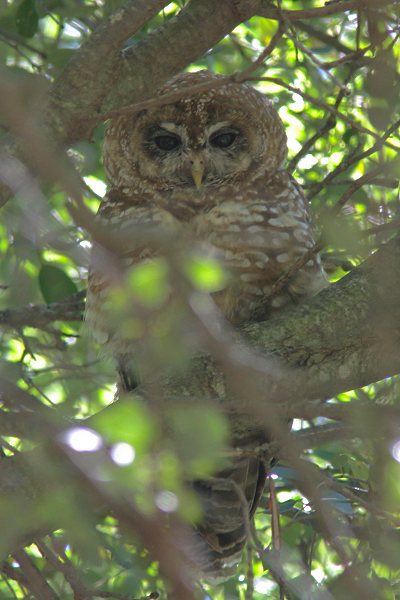
Date: 2005-08-13
Lens: Canon 300mm IS F4 + 1.4x II Converter

 Spotted Owl
Strix occidentalis
Spotted Owl
Strix occidentalis
 Description
DescriptionPreferring older forests, the Spotted Owl has been the center of a political battle with the timber industry. The decline of the species, which is on the U.S. Endangered Species List, is attributed to the destruction of old growth forests. Spotted Owls are one of the most studied species of owl in the world. Spotted Owls hunt from just after sunset to sunrise; and eat a broad range of mammals, birds, insects, amphibians, and reptiles. Spotted Owls hunt from a perch and rarely forage in flight.
Dark brown upperparts with white spots. White underparts heavily marked with brown barring. Round head. Brown facial disks with dark border. Pale, sometimes white, eyebrows. Dark eyes. Sexes similar. 16.5 to 19 inches in length.
Old-growth coniferous forests, densely wooded canyons.
 Nesting
Nesting2-3 white eggs. The eggs have a 28-32 day incubation period. Fledging occurs in 34-36 days. The nest is a natural tree cavity, canyon wall cavity, or an abandoned hawk nest. Spotted Owls are long-lived, up to 17 years in the wild.